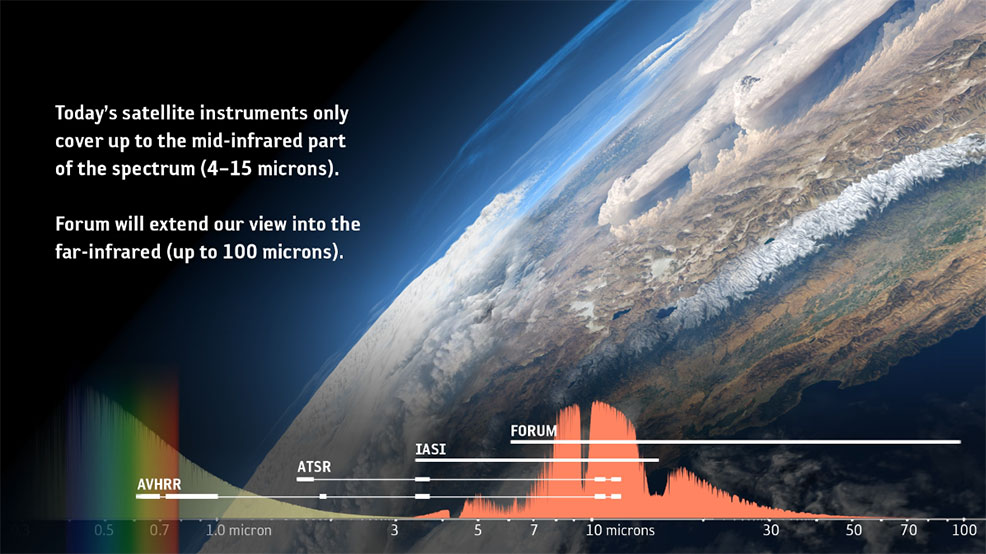
25th September 2019 New climate-monitoring satellite planned for 2026 A new European mission – the Far-infrared Outgoing Radiation Understanding and Monitoring mission ("FORUM") – will add a crucial measurement to help understand Earth's changing climate. Data from the new spacecraft will improve confidence in the accuracy of climate change assessments that influence future policy decisions. FORUM will record the far-infrared radiation emitted from Earth to space – extending beyond the parts of the infrared spectrum currently being measured. The extra information will help in calculating Earth's "radiation budget" – the balance between the incoming radiation (mostly from the Sun at short wavelengths) and outgoing radiation, which is a combination of reflected radiation from the Sun and radiation emitted by the Earth system (much of it at longer wavelengths). When the radiation budget is not balanced, the temperature of the planet can change, with consequences for the climate. Human activities have altered the atmosphere since the Industrial Revolution, changing the dynamics of the heat-conserving elements.
As shown above, more than half of the outgoing longwave energy is in the far-infrared part of the electromagnetic spectrum, which FORUM will measure for the first time. The results should give a clearer, more detailed picture of what is happening at different altitudes, and provide more accurate tracking of the atmospheric components, especially water vapour and ice clouds. "FORUM will measure, for the first time, the far-infrared part of the electromagnetic spectrum from space, thus allowing us to better understand the energy balance of our planet," said Josef Aschbacher, Director of Earth Observation Programmes at the European Space Agency (ESA). "Better understanding the complexity of our climate system and filling gaps in our knowledge is of critical importance as the consequences of climate change are far-reaching, affecting all facets of society and the natural world." "Satellite missions up until now have mostly measured wavelengths in the mid-infrared – that's shorter than 15 microns," explained Dr Helen Brindley from Imperial College London and the UK National Centre for Earth Observation, in a BBC interview. "We're now looking to measure longer than 15 microns which has never been done before from space, with very high accuracy and with what we call very high spectral resolution, which means we can really see the 'fingerprints' of different gases in the atmosphere – particularly water vapour – and really get an idea of how the energy is changing with time." The design of the mission will now be fine-tuned, and then built with a view to being launched in 2026.
Comments »
If you enjoyed this article, please consider sharing it:
|







